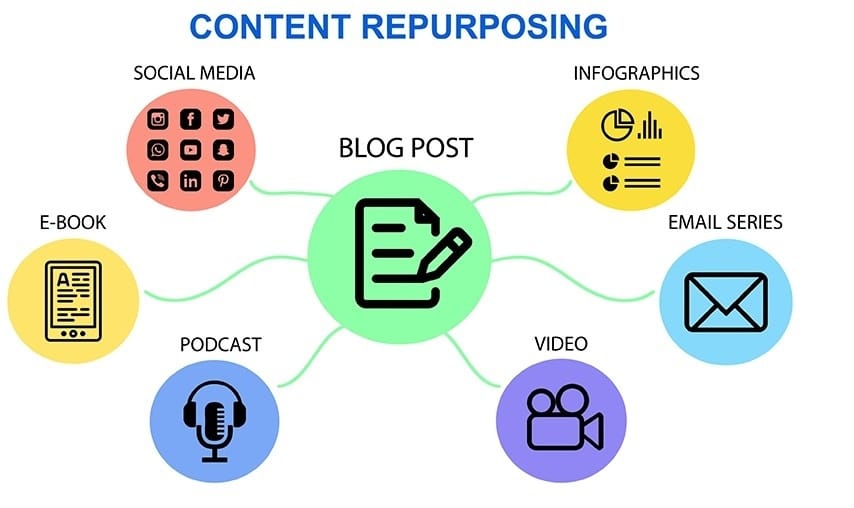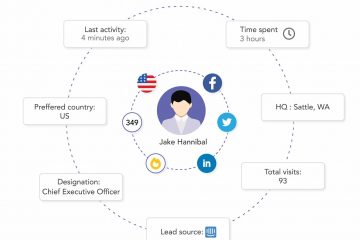Guide To Creating Your Data-Driven Content Strategy
At the core of the whole idea about content marketing is to provide relevant, valuable, and helpful information through content to attract a target group of audience, retain them and organically convert them into paying customers.
There are many benefits of content marketing, the organic approach of acquiring customers, compounding benefits over the long run, establishing authority and expertise in the field of operations, etc.
A lot of people understand the benefits very well and as a result, there exist around 500 million blogs with around 2 million blog posts being published each day.
So, making a mark with your content and driving traffic to your website isn’t easy.
That is unless, of course, you are utilizing all the data available to you to create, alter and update your content marketing strategy!
When data drives content, it increases its potency by ten folds.
How does that happen? Continue reading and you shall know!
But first.
What Is Data-Driven Content?
To put it simply, data-driven content is the content created based on the insights generated through data analysis.
What insights are these?
These insights are about what type or format of content your audiences or ideal customers prefer, the recent trends in your industry, what people want to read about, what type of communication or medium is the best, etc.

Image Source: contently.com
Once you have these analytical insights, you can shift your focus to creating creative, engaging and valuable content.
The benefit of doing so is that you reach your audience more efficiently, publish content that gets consumed, keep the audience interested and engaged, etc.
This is a targeted approach and enables you to yield more benefits compared to any generic content marketing strategy that relies on a lot of guesswork.
By eliminating the uncertainties with the use of insights, the outcomes of a content marketing campaign are more accurately predictable, enabling you to plan and prepare thoroughly to grow your business.
Let us now learn about the benefits of data-driven content in detail.
Why Does Data-Driven Content Work Better?
While we did mention a few benefits above, those don’t paint a clear picture in terms of what all gains you can make from data-driven content. Below are the benefits explained:
1. You Understand Your Audience
An important objective of content marketing is to drive traffic to your website by getting your blogs and articles ranked higher in the search results.

Source: searchmetrics.com
Search engines like Google aim to provide the best answers to user searches. So, when you understand your ideal customer, you know what questions they are asking to search engines like Google or in the online space.
This knowledge will not only allow you to generate content that gets ranked higher on Google but to provide relevant answers to your audience once they click on your blog post.
2. You Understand Your Competition
Understanding your competition and their activities can answer a lot of questions you may not even have been asking. What type of content they publish, what keywords they target, what topics they rank for, etc. is important information.

Source: weblizar.com
These bits of information will allow you to understand what is working for them and what is not. Knowing this you can try and outdo them at things that are working for them to gain a strategic advantage.
Knowing your competition thoroughly will not only enable you to stay ahead of them but will enable you to establish yourself as an industry leader by taking the necessary actions required based on the insights.
3. Improved Content Timing
Some topics generate a lot of traffic but only for a limited amount of time. When you have insights that help you identify and predict the cycles of such topics, you can publish relevant content in time to make the most of it.
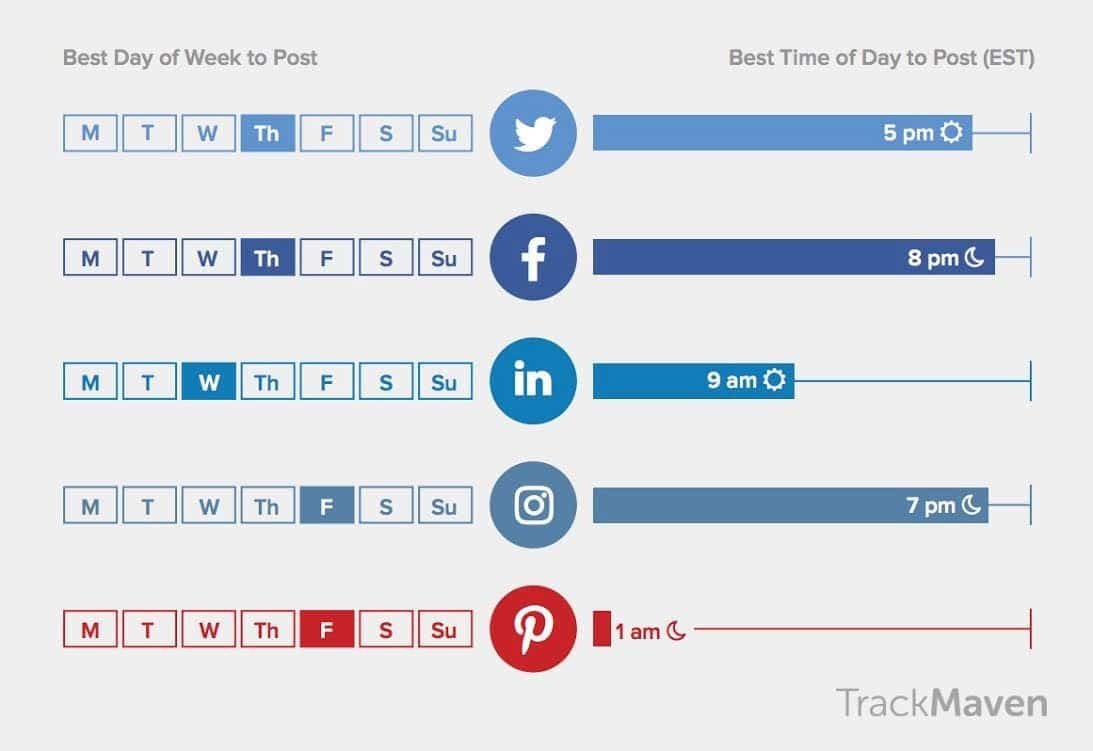
Source: entrepreneur.com
When you’re first out of the gate with value and solutions that people want at that particular time, you maximize your reach, positive impressions, increase brand value, reputation and return on marketing investment.
With more traffic, you will gain more new customers even when your conversion rate remains the same. All of this can be achieved with the right timing using insights.
4. Cover Topics That Your Audience Is Curious About
Data reveals a lot about the search intent of users on the internet. By users, we mean buyers in your target audiences. These users are curious about a lot of things. The only problem, however, is that only a few brands are writing on these topics.
With data driving your content strategy, you can target such topics that get a lot of search hits but don’t have well-written, informative articles to satisfy the curiosity.
Tapping into this audience allows you to expand your reach with menial or absent competition which makes content marketing more efficient and effective in one go.
5. Delivery In The Right Format
Content can be delivered in various formats, texts, visuals, images, graphics, infographics, videos, audios, podcasts, etc.
The decision of choosing the format of delivery, when driven by data, allows you to maximize the intended utility of the content.
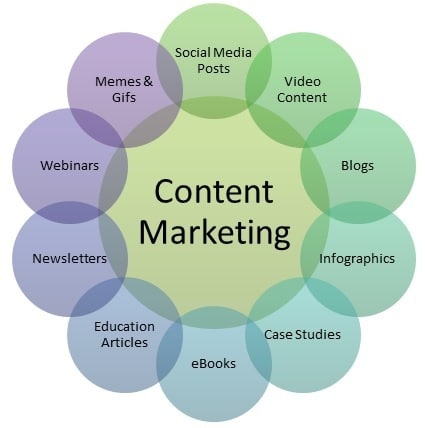
Source: mbaskool.com
Knowing your audience and knowing what format they prefer content in, enables you to deliver content in that format. Which is not only appreciated by your audience but boosts engagement and consumption of the content you publish.
Allowing for content delivery in more than one format can also help you maximize reach and tap into more subsets of your target audience.
Now that you know and understand how data-driven content works and how it is beneficial, let us help you get started with data-driven content strategies.
Top 6 Data-Driven Content Tips
Develop A Data-Driven Framework
A lot of steps are involved in generating and publishing content. There is research, topic selection, overviewing analytics, generating and optimizing content, publishing it, repurposing it, curating it, etc.
All these steps need to be driven using data and for that, you will need a framework that enables this. With a proper framework, your team can make more accurate decisions and carry out work seamlessly.
The performance of published content can be monitored and necessary tweaks can be made in future content based on the insights gained from existing posts. With a good data-driven framework, your workflow can be streamlined.
Before getting started, it is important to understand how users engage with content on the platforms you are promoting. If you are promoting on Google Search, for example, starting with keyword planning and checking competition is the first step. SEO tools like Google’s Keyword Planner, Ahrefs, Moz, etc. can help you get the data you need.
Set Up A Content Delivery Framework.
To maximize reach for your content after distribution, you need to promote them on multiple channels. We are talking about social media platforms, newsletters, etc. The only issue here is that each channel has a different time at which the user engagement is at its highest. Solution?
A content delivery network that will make use of the scheduling feature and deliver the right content on the right channels at the time when the engagement is at its highest.
As a result, you will maximize the reach and engagement for your content on every channel and platform it is delivered onto.
Update Your Best Performing Content
The tech world changes every day and so do the facts, figures, and statistics about it. To maximize the lifespan of your best-performing content, regularly update it with the latest facts and statistics to keep it relevant. You will notice that most ranking websites on SERPs are updated frequently.
This small step keeps your best-performing content relevant for a longer time and allows you to maximize the return on marketing investment. Plus, if you are focusing on SEO, it is an absolute necessity as Google frequently pushes down outdated articles that are losing traction.
With such regular updates, you can retain traffic with minimum effort and allocate more resources towards creating fresh and potent content.
Repurpose Content
You can always repurpose your content to distribute it on different platforms and channels. You can even change the delivery format by repurposing a blog in the form of a video or podcast or infographic.
The benefit of doing so is that you get access to a wider audience, maximize reach with multiple formats, drive traffic to your website from different platforms and channels and the backlinks to your original content will help boost your SEO.
Utilize Influencer Marketing
People are more likely to take an influencer’s word for your brand rather than trusting you directly. Combined with the goodwill, reputation, and reach of an influencer, you can boost the effectiveness of your content tremendously.
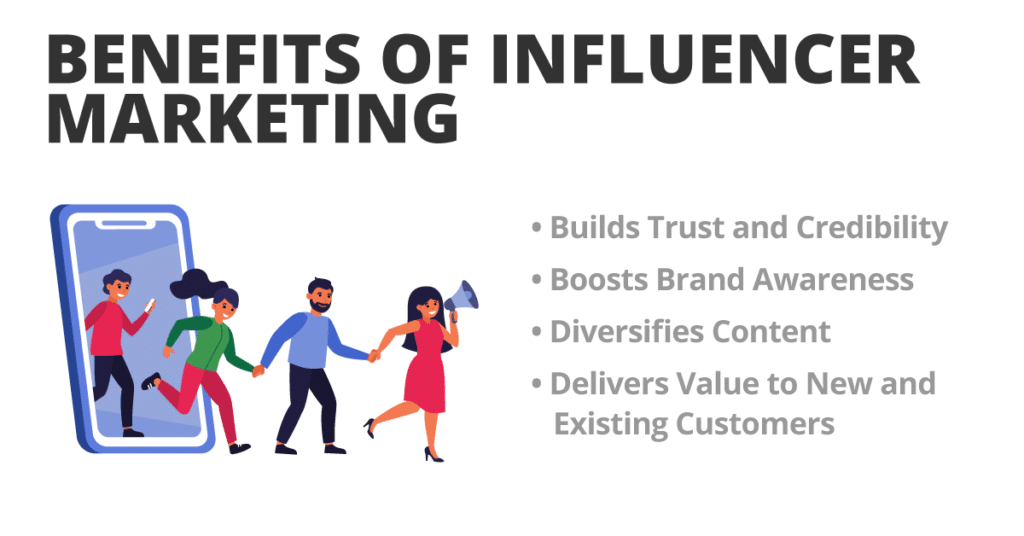
Source: letsinfluence.io
For this you will have to identify influencers your target audience follow on the intended platform or channel. Once identified, you will have to check how well they resonate with the values of your brand before partnering up.
After all of this is done, you have the influencer talk or post about your blog posts and promote your content on their platform to drive additional traffic to your website.
Create Content That Generates Backlinks
More backlinks equate to a higher chance of your content earning the top rank in Google search results. A study found a correlation between backlinks and higher Google search ranks.
To maximize the chances of earning the top rank on Google, you need to create content that generates backlinks in the form of citations. The citations could be about some statistic you found out through a survey or research.
Good infographics also generate a lot of backlinks as bloggers make use of them in their blogs and cite the source for the infographic.
Connecting Content Strategy with Revenue
It is necessary to periodically assess your content to understand what works and what doesn’t. And, which content actually brings you leads. You may use different tools depending on what you want to accomplish. If you want to learn about content that ranks on SERPs, a tool like Ahrefs can be used. If you want to get holistic data of visitors landing on your content, use Google Analytics. If you want to understand, which pieces of content are bringing you leads and customers, use a journey tracking software like Salespanel.
To Conclude With
Making an impact and accomplishing marketing objectives using content marketing isn’t easy when done conventionally. When driven by data, however, a lot of these complexities and ambiguity surrounding the effectiveness of content marketing are eliminated.
With the tips mentioned above, you can effectively maximize the returns on marketing investment using content marketing.
Sell more, understand your customers’ journey for free!
Sales and Marketing teams spend millions of dollars to bring visitors to your website. But do you track your customer’s journey? Do you know who buys and why?
Around 8% of your website traffic will sign up on your lead forms. What happens to the other 92% of your traffic? Can you identify your visiting accounts? Can you engage and retarget your qualified visitors even if they are not identified?
